|
 DYAS was established on 30th October 1930 as a joint-stock company, focused on the production of plywood and veneer. The plant was situated in the premises of a former sugar factory owned by the May brothers. One of the May brothers, Dr. Robert May, was also a co-partner of DYAS, when Mr. Roubíček was the major shareholder. During the first year, the sugar factory equipment was dismantled and removed, and the production equipment for plywood, blockboard and veneer installed. Production of plywood started in 1931. DYAS was established on 30th October 1930 as a joint-stock company, focused on the production of plywood and veneer. The plant was situated in the premises of a former sugar factory owned by the May brothers. One of the May brothers, Dr. Robert May, was also a co-partner of DYAS, when Mr. Roubíček was the major shareholder. During the first year, the sugar factory equipment was dismantled and removed, and the production equipment for plywood, blockboard and veneer installed. Production of plywood started in 1931.
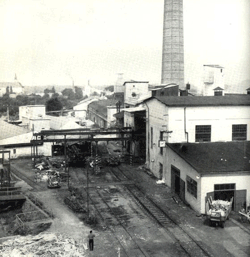 The first production equipment consisted of two Fleck peeling machines (3300mm and 1600mm) and very basic chamber driers for veneer. In 1932 other machines were installed and commissioned, such as Fleck veneer cutters, double-deck dryer, gluing machines and a Topik jointing machine. A Siempelkamp 12-deck pressing machine + a KSB 12-deck pressing machine were also installed with longitudinal and traverse sizing saws at this time. Two sanding machines were used for product finishing. The first production equipment consisted of two Fleck peeling machines (3300mm and 1600mm) and very basic chamber driers for veneer. In 1932 other machines were installed and commissioned, such as Fleck veneer cutters, double-deck dryer, gluing machines and a Topik jointing machine. A Siempelkamp 12-deck pressing machine + a KSB 12-deck pressing machine were also installed with longitudinal and traverse sizing saws at this time. Two sanding machines were used for product finishing.
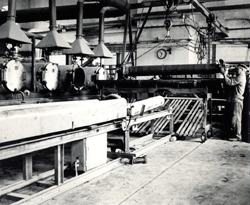 During the first year of production, approximately 230 employees worked for the company. Two-shift working was introduced in 1932, and some sites even started three-shift operations. In early production, the composition of basic raw materials used by DYAS, differed from that used today; until 1935, alder (mainly imported from Poland) was highly represented. The percentage of wood species used in production in 1934 was: spruce 2,34%, beech 6,13%, okume 34,25%, alder 26,09% and others 31,19%. During the first year of production, approximately 230 employees worked for the company. Two-shift working was introduced in 1932, and some sites even started three-shift operations. In early production, the composition of basic raw materials used by DYAS, differed from that used today; until 1935, alder (mainly imported from Poland) was highly represented. The percentage of wood species used in production in 1934 was: spruce 2,34%, beech 6,13%, okume 34,25%, alder 26,09% and others 31,19%.
 Until 1940, the gluing process used a mixture of albumin adhesive that was produced in the plant as well as casein adhesive. During the 'Protectorate' the company used adhesives made in Germany, including Tegofilm. Until 1940, the gluing process used a mixture of albumin adhesive that was produced in the plant as well as casein adhesive. During the 'Protectorate' the company used adhesives made in Germany, including Tegofilm.
In the beginning the plant was set up only for plywood production in both dry and wet conditions (pressing per 10 pieces in one deck with subsequent drying). Early plywood production methods cannot be compared to the methods used today. 16 pressing cycles per 8 hours were completed on one shift. In 1932 blockboard production was small, usually only approximately 100 pieces per day of rod structure blockboard were produced (spruce veneer core with a thickness of 7 mm).
The production expanded significantly in 1934-1935, when annual output reached 4,550m3 of Plywood, and 1,500 m3 of blockboard.
The output gradually increased with the introduction of new machinery, and in 1938-1940 reached 4,800m3 of plywood, 2,800m3 of blockboard and 1,200m3 door boards.
The processing of veneer waste started in 1935-1936. Using rather primitive pressing equipment during night shift, the first boards pressed out of wood chips and dust, so called "Dyazity" and "Dyaplány" were manufactured. Testing of this production was carried out until 1939 then replaced with using dust and waste for doors cores.
During the years of German occupation, the plant focused on supplies for the armed forces (stocks, aircraft plywood, etc.). In 1945 the plant was gradually modernised and production increased, in 1969 the output passed 14,100m3 of plywood, 10,300m3 of blockboard, 461T of laminated wood and later, 100m3 of aircraft plywood. In recent times the plant has introduced production of moulded pieces, tubes, cross-overs, etc.
|
|
| 1930 |
DYAS, joint-stock company, was established and the conversion of the existing sugar factory to the production of plywood was started. |
| 1931 |
Plywood production started |
| 1939 |
World War II. |
| 1945 |
Pursuant to the Decree of the President of the Republic of 20 October 1945 DYAS was nationalised together with other wood processing plants engaged in the plywood production and the national enterprise „Závody na překližky a dýhy“ , with its registered office in Prague, was established. |
| 1950 |
The enterprise was divided into two parts, the Czech one and the Moravian one , when the latter „Moravské překližkárny a dýhárny n.p.“ , with its registered office in Hodonín, also included DYAS. |
| 1952 |
The enterprise was futher divided into individual undertakings. At that time, DYAS separated from the enterprise and started operations underthe name „Slovácká překližkárna a dýhárna“, with its registered office in Uherský Ostroh. |
| 1955 |
As the division into small subjects did not prove to be beneficial, the undertakings again merged into larger units. Subsequently, the national enterprise „Slovácké dřevařské závody“ , with its registered office in Hodonín, was established. |
| 1958 |
The enterprise changed its name to „Závody na překližky a dýhy n.p.“ with itsregistered office in Hodonín. |
| 1989 |
The national enterprise was transformed into the state-owned enterprise „Závody na překližky a dýhy s.p.“ |
| 1992 |
Privatisation and establishment of a separate enterprise DYAS a.s. |
| 1996 |
Establishment of DYAS s.r.o. And acquisition of all assets and liabilities from DYAS a.s. |
| 2003 |
Due to mismanagement, the company faces problems resulting in the declaration of bankruptcy against DYAS s.r.o. In spite of this, the production was maintained. |
| 2005 |
Jáchymov invest a.s. took over the company acquiring the tangible and intangible assets of DYAS s.r.o. from the trustee in bankruptcy. |
| 2008 |
renaming of Jáchymov invest a.s. to DYAS.EU, a.s. |
| 2011 |
Installation of new continual pressing line from company Raute and new sizing machine from company Holzma |
| 2012 |
Setting up a new CNC saw machine for precise cut to size plywood sheets |
|


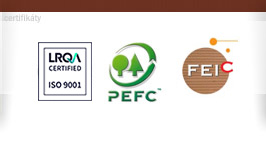



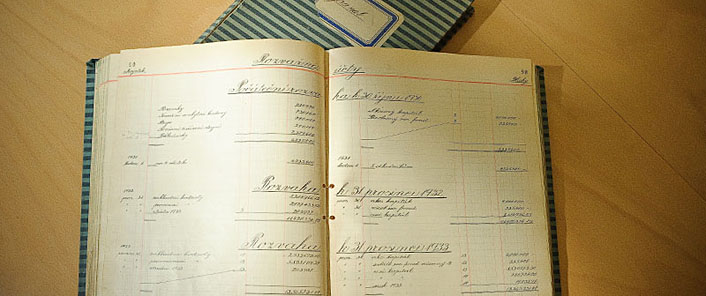
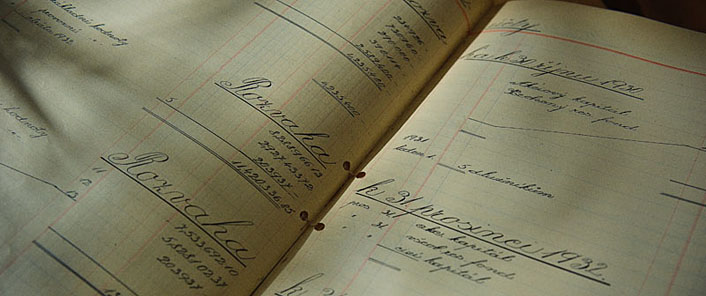



 DYAS was established on 30th October 1930 as a joint-stock company, focused on the production of plywood and veneer. The plant was situated in the premises of a former sugar factory owned by the May brothers. One of the May brothers, Dr. Robert May, was also a co-partner of DYAS, when Mr. Roubíček was the major shareholder. During the first year, the sugar factory equipment was dismantled and removed, and the production equipment for plywood, blockboard and veneer installed. Production of plywood started in 1931.
DYAS was established on 30th October 1930 as a joint-stock company, focused on the production of plywood and veneer. The plant was situated in the premises of a former sugar factory owned by the May brothers. One of the May brothers, Dr. Robert May, was also a co-partner of DYAS, when Mr. Roubíček was the major shareholder. During the first year, the sugar factory equipment was dismantled and removed, and the production equipment for plywood, blockboard and veneer installed. Production of plywood started in 1931. The first production equipment consisted of two Fleck peeling machines (3300mm and 1600mm) and very basic chamber driers for veneer. In 1932 other machines were installed and commissioned, such as Fleck veneer cutters, double-deck dryer, gluing machines and a Topik jointing machine. A Siempelkamp 12-deck pressing machine + a KSB 12-deck pressing machine were also installed with longitudinal and traverse sizing saws at this time. Two sanding machines were used for product finishing.
The first production equipment consisted of two Fleck peeling machines (3300mm and 1600mm) and very basic chamber driers for veneer. In 1932 other machines were installed and commissioned, such as Fleck veneer cutters, double-deck dryer, gluing machines and a Topik jointing machine. A Siempelkamp 12-deck pressing machine + a KSB 12-deck pressing machine were also installed with longitudinal and traverse sizing saws at this time. Two sanding machines were used for product finishing. During the first year of production, approximately 230 employees worked for the company. Two-shift working was introduced in 1932, and some sites even started three-shift operations. In early production, the composition of basic raw materials used by DYAS, differed from that used today; until 1935, alder (mainly imported from Poland) was highly represented. The percentage of wood species used in production in 1934 was: spruce 2,34%, beech 6,13%, okume 34,25%, alder 26,09% and others 31,19%.
During the first year of production, approximately 230 employees worked for the company. Two-shift working was introduced in 1932, and some sites even started three-shift operations. In early production, the composition of basic raw materials used by DYAS, differed from that used today; until 1935, alder (mainly imported from Poland) was highly represented. The percentage of wood species used in production in 1934 was: spruce 2,34%, beech 6,13%, okume 34,25%, alder 26,09% and others 31,19%. Until 1940, the gluing process used a mixture of albumin adhesive that was produced in the plant as well as casein adhesive. During the 'Protectorate' the company used adhesives made in Germany, including Tegofilm.
Until 1940, the gluing process used a mixture of albumin adhesive that was produced in the plant as well as casein adhesive. During the 'Protectorate' the company used adhesives made in Germany, including Tegofilm.